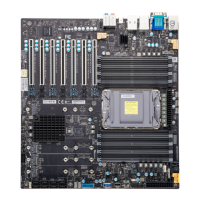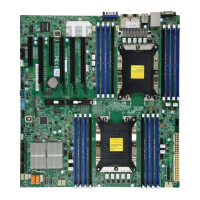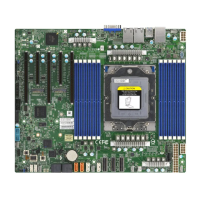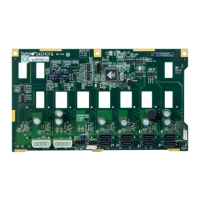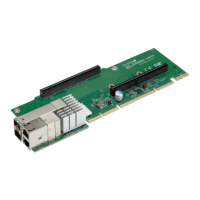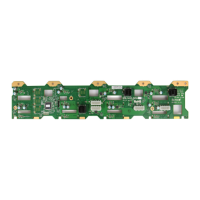Super X12SPW-TF/F User's Manual
102
Out-of-Band Mgmt Port
The feature selects a serial port in a client server to be used by the Microsoft Windows
Emergency Management Services (EMS) to communicate with a remote host server. The
options are COM1 and SOL.
Terminal Type
Use this feature to select the target terminal emulation type for Console Redirection.
Select VT100 to use the ASCII character set. Select VT100+ to add color and function
key support. Select ANSI to use the extended ASCII character set. Select VT-UTF8 to use
UTF8 encoding to map Unicode characters into one or more bytes. The options are VT100,
VT100+, VT-UTF8, and ANSI.
Bits Per Second EMS
This feature sets the transmission speed for a serial port used in Console Redirection.
Make sure that the same speed is used in the host computer and the client computer. A
lower transmission speed may be required for long and busy lines. The options are 9600,
19200, 57600, and 115200 (bits per second).
Flow Control EMS
Use this feature to set the ow control for Console Redirection to prevent data loss caused
by buer overow. Send a "Stop" signal to stop sending data when the receiving buer
is full. Send a "Start" signal to start sending data when the receiving buer is empty. The
options are None, Hardware RTS/CTS, and Software Xon/Xo.
Data Bits EMS, Parity EMS, Stop Bits EMS
ACPI Settings
NUMA
Use this feature to enable or disable Non-Uniform Memory Access (NUMA), a feature that
improves memory-to-processor communication and performance. The options are Disabled
and Enabled.
UMA-Based Clustering
Use this feature to enable or disable Uniform Memory Access (UMA) clustering. The options
are Disable (All2All) and Hemishpere (2-clusters).
WHEA Support
Select Enabled to support the Windows Hardware Error Architecture (WHEA) platform and
provide a common infrastructure for the system to handle hardware errors within the Windows
OS environment to reduce system crashes and to enhance system recovery and health
monitoring. The options are Disabled and Enabled.

